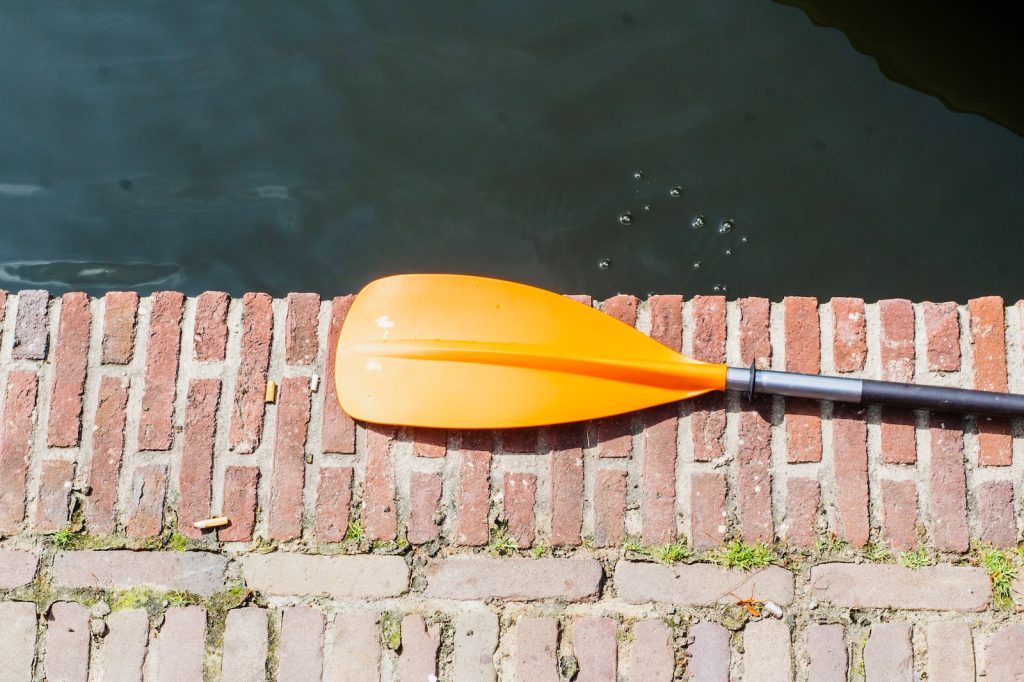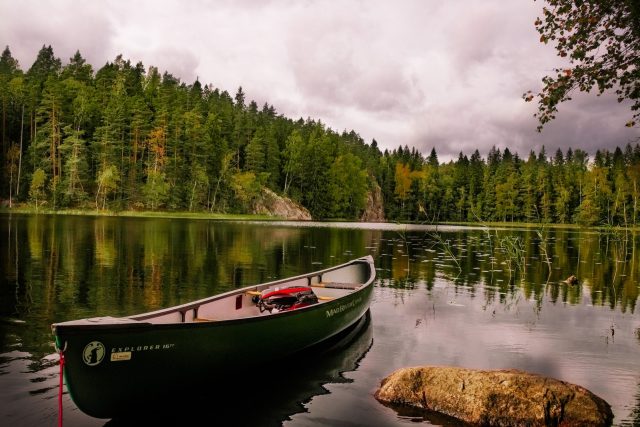Canoeing is a great way to spend quality time outdoors and explore the beauty of nature. Whether you’re a beginner looking for an easy introduction to paddling, or an experienced pro seeking new challenges, canoeing has something for everyone. Paddling across lakes can be a peaceful and therapeutic experience that will bring joy and relaxation. This article provides an overview of canoeing on lakes, from the basics of getting started to more advanced techniques.
What is Canoeing?
Canoeing is a popular outdoor water activity that involves paddling a long, narrow boat through rivers, lakes, and other bodies of water. Canoes are typically made of lightweight materials, such as wood, aluminum, or composite materials, and are designed for speed, agility, and stability.
Canoeing can be enjoyed in various settings, from calm, peaceful lakes to fast-moving rapids and white-water environments. It can be done as a recreational activity or as a competitive sport, with various events and competitions held around the world.
Benefits of Canoeing
Canoeing is a great outdoor activity that offers many benefits. For starters, it is a fantastic way to get some exercise while enjoying the great outdoors. Canoeing can help improve cardiovascular health and strengthen upper body muscles. Additionally, it is a low-impact activity, which means that it is easy on your joints and can be enjoyed by people of all ages and fitness levels.
Canoeing can also be a fun and relaxing way to reduce stress and connect with nature. It allows you to explore new waterways, observe wildlife, and enjoy the tranquility of being on the water. Overall, canoeing is an excellent way to improve physical and mental health while having fun and creating lasting memories.
Choosing the Right Equipment

Choosing the right equipment is essential for a safe and enjoyable canoeing experience. The first piece of equipment you’ll need is, of course, a canoe. Canoes come in various shapes and sizes, so choosing one suitable for your intended use is essential. If you plan a multi-day canoe trip, you’ll need a larger canoe carrying more gear. A recreational canoe will suffice if you plan on canoeing in calm waters.
Additionally, it’s essential to choose the right paddle for your canoe. Paddles come in different lengths and materials, and selecting the right one can significantly impact your paddling experience. A good rule of thumb is to choose a paddle that’s at least as tall as you are. Finally, it’s important to wear appropriate safety gear, including a properly fitted personal flotation device (PFD), proper footwear, and clothing that will protect you from the elements. With the right equipment, you’ll be well on your way to a safe and enjoyable canoeing experience.
Essential Paddling Techniques
Learning essential paddling techniques is crucial for a successful and enjoyable canoeing experience. The first technique to master is the J-stroke. This technique helps to keep the canoe moving straight and is also useful for making minor adjustments to your direction. The J-stroke involves placing the paddle in the water and pulling it toward the back of the canoe while simultaneously pushing the paddle away from the canoe with a slight twist of the wrist.
Another essential technique is the forward stroke. This stroke is used for moving the canoe forward and involves placing the paddle in the water at the front of the canoe and pulling it towards the back of the canoe. The forward stroke can be done on either side of the canoe, and alternating sides can help you maintain a straighter course.
The sweep stroke is another important technique for turning the canoe. This stroke involves placing the paddle at the front of the canoe and sweeping it in a wide arc toward the back of the canoe. This creates a turning motion that can steer the canoe in the desired direction.
It’s also essential to learn how to brace. Bracing is the technique used to prevent the canoe from tipping over. It involves placing the paddle in the water on the side of the canoe tipping and using it to apply pressure to prevent the canoe from tipping over.
You can confidently navigate the water and enjoy the beautiful scenery by mastering these essential paddling techniques. Practice these techniques regularly and wear appropriate safety gear to ensure a safe and enjoyable canoeing experience.
Safety Tips for Beginners
For beginners, safety should be a top priority when canoeing. Here are some essential safety tips to keep in mind:
- Always wear a personal flotation device (PFD) while on the water. Make sure it fits properly and is rated for your weight and the activity you are participating in.
- Check the weather forecast before heading out, and avoid canoeing in high winds, thunderstorms, or other hazardous conditions.
- Stay hydrated, and bring plenty of water and snacks to keep your energy levels up.
- Tell someone where you’re going and when you expect to return. Letting a friend or family member know your plans is always a good idea.
- Familiarize yourself with the waterway you’ll be canoeing on, including potential hazards like rocks, rapids, or downed trees.
- Check your equipment before getting on the water to ensure it’s in good working order and that you have all the necessary safety gear.
- Be mindful of your surroundings and always watch for other boats, swimmers, or wildlife.
- Know your limits and stay within them. If you’re a beginner, start with calm, flat water and work your our way up to more challenging conditions.
- If you capsize, stay with your canoe and use it for flotation. Don’t panic, and try to stay calm while waiting for help.
By following these safety tips, you’ll be better prepared for a safe and enjoyable canoeing experience. Remember, safety should always be a top priority, regardless of your experience on the water.
Finding the Perfect Location
The perfect location for canoeing can enhance your overall experience on the water. Here are some factors to consider when choosing a location:
- Water conditions: Consider the water conditions, including temperature, depth, and speed. If you’re a beginner, it’s best to start with calm, flat water, while more experienced paddlers may prefer faster-moving water or rapids.
- Scenery: Choose a location that offers beautiful scenery and natural surroundings. A peaceful and scenic waterway can help create a more enjoyable and relaxing experience.
- Accessibility: Consider the location’s accessibility, including parking, launching areas, and any fees required for use.
- Safety: Choose a location safe for canoeing, with minimal hazards, such as rocks or debris in the water. Choosing a location with good visibility and minimal boat traffic is also essential.
- Wildlife: Consider the wildlife in the area and whether it adds to the overall experience. Some canoeing locations offer the opportunity to observe wildlife up close, which can be a memorable experience.
- Amenities: Consider whether the location offers any amenities such as restrooms, picnic areas, or camping facilities.
Plenty of canoeing locations exist whether you’re looking for a peaceful paddle or a more adventurous experience. Do your research and choose a location that offers the right balance of scenery, accessibility, and safety to make the most of your time on the water.
Enjoying the Joys of Canoeing
Canoeing is an enjoyable way to explore the outdoors and connect with nature. The experience of paddling a canoe on a lake offers many unique benefits that make it well worth learning how to do it.
The joys of canoeing are numerous. It’s peaceful and relaxing, allowing you to enjoy scenic views while exercising. Plus, it lets you get closer to wildlife than other activities like motorboating or fishing. Canoeing also teaches essential skills like teamwork, patience, communication, and problem-solving while having fun!






























